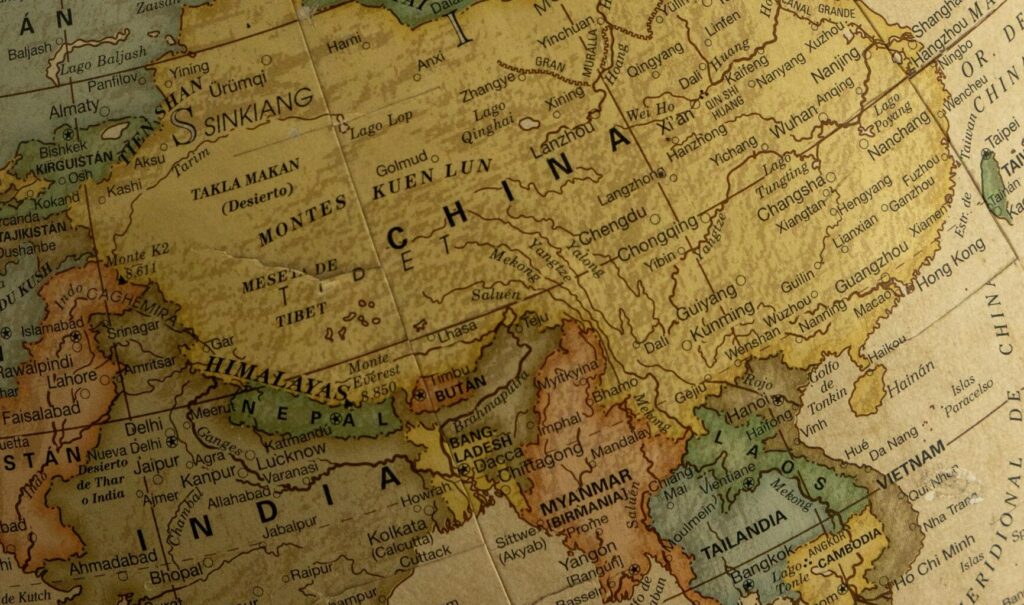Author: Amy Wonnacott, Research Intern
India’s Operation Sindoor in May 2025 marked a milestone in the military application of space-based technology in the Indo-Pacific. Conducted as a response to the Pahalgam attack on 22 April, the operation was characterised by a high level of integration between terrestrial and space-based systems. Using indigenous satellite communications, Earth observation and navigation technology, India conducted targeted defence responses across the Pakistani border. Though it was not the first global example of satellite integration in conflict, as highlighted by the War in Ukraine, it was a significant moment for conflict in the Indo-Pacific.
Territorial disputes are ingrained in regional geopolitics of the Himalayas. The Line of Actual Control between India and China remains undefined and contested, and the conflict in Kashmir has long been a cause of tension between India and Pakistan. As the viability of space resources grows, these earth-based geopolitics will be increasingly reflected in outer space, which could have significant security implications for the region.
Indigenous Military Satellite Application
The unreliability of traditional communication methods in remote border areas makes space-based satellite systems crucial, with significant investment underway to boost their military application across the Indo-Pacific. Since 2015, China has fundamentally restructured its approach to space and launched an arsenal of dedicated military satellites. India’s space program relies on a higher proportion of dual-use satellites (with both military and civilian application) due to a comparatively late inclusion of security into space policy. Both countries emphasise the development of indigenous satellite systems in three key areas to reduce reliance on foreign technology and ensure strategic autonomy.
Satellite communications enable secure data exchange between military units through an in-orbit network. China’s emphasis on informatized warfare means that secure communications are integrated into satellites, enabling coverage over a vast area. The COMSAT system has grown by a factor of 12 in the past eight years, and includes the Shentong series of secure military communication satellites. India’s 14 GSAT communication satellites are mostly dual-use, but there are three for dedicated military communication. ISRO has announced programs to boost the GSAT-7 series to enhance network-centric warfare capabilities.
Positioning, Navigation, and Timing systems are crucial for missile guidance and troop movement. The US-owned GPS has long been the dominant provider, but both China and India have developed indigenous systems after limitations in access and concerns over dependency. China’s BeiDou satellite navigation system comprises of 46 operational satellites, providing global coverage and critical situational awareness support to military operations. Its rapid expansion increasingly challenges the US, with BeiDou vs GPS becoming a new battle of geopolitical influence.
The Indian NavIC system is much smaller, providing regional coverage using a constellation of 7 satellites for dual civilian and military use. It played a key role during Operation Sindoor to provide accurate strike targeting. ISRO claims the system offers enhanced precision due to its regional focus, but there are still challenges of ground infrastructure and network integration.
Intelligence, Surveillance, and Reconnaissance (ISR) satellites capture imagery for real-time situational awareness. China’s Yaogan series uses optical technology to capture high-resolution images even at night or with heavy cloud cover. Indian satellite observation using the CARTOSAT series has allowed close monitoring of infrastructure developments along the India-Pakistan border since 2005. Data can only be downloaded from CARTOSAT every two weeks, so India retains some reliance on foreign infrastructure, using images from US company MAXAR during Operation Sindoor. In 2025 ISRO announced plans to launch a further 52 satellites dedicated to ISR, completing the move to indigenous capability within this field. This illustrates the geopolitical competition for strategic autonomy in space-based capabilities.
Counterspace Capability
Satellite technology has become a military target due to its critical role in offensive and defensive strategies across the Indo-Pacific. China and India have rapidly developed counterspace systems which can disrupt, damage or destroy a satellite reversibly or irreversibly to safeguard their own systems. Both India and Pakistan claim that satellite jamming systems disrupted air defence and communications during Operation Sindoor. The application of these systems in conflict scenarios rather than testing indicates the threat which space systems now face.
The counterspace landscape has changed significantly in the last two decades. In 2007, China destroyed a defunct weather satellite in a direct-ascent anti-satellite test (ASAT) which caused international outcry as the largest single space debris producing incident in history. It changed the space defence landscape, contributing to the normalisation of ASAT capability. India’s counterspace program has developed as a direct consequence of this, evidenced by demonstration of indigenous DA-ASAT capability, Mission Shakti, in March 2019. Increased reliance on space-based assets and awareness of space sustainability has led to a shift away from hard-kill systems. Instead, states pursue counterspace capability which is diverse, non-detectable and deniable. Technology such as electronic warfare (EW) interferes with radar and communications, disrupting reliance on satellite systems without jeopardising the space environment.
China’s counterspace strategy prioritises these soft-kill systems with lower political and escalatory risk. There is evidence of significant EW expansion, which could disrupt data links and access between forces as part of new informatized warfare strategy. An EW drone, tested in 2022, is a significant force-multiplier for China. India’s growing counterspace capabilities echo China’s strategy but are still in early stages. India has completed testing of electronic warfare, and claims that EW systems were crucial during Operation Sindoor to limit Pakistan’s situational awareness, navigation accuracy and munitions capability. ISRO has reported development of a Satellite Navigation System (SNS) Jammer capable of blocking BeiDou signals, a direct sign that India’s counterspace capability is aimed at China. Yet these efforts may negatively impact strategic stability in the Indo-Pacific due to the growing asymmetry between Indian and Chinese military space programmes.
Pakistan has recognised India’s counterspace capabilities as a pressing security threat. Its space program is dependent on foreign technology, both for satellite applications and defence, predominately from China. Pakistani capability is boosted by China’s investment, which emphasises their strategic expansion in the Indo-Pacific to counter the influence of India. During Operation Sindoor, Pakistan had access to Chinese-supplied radar and EW systems, which it claimed had jammed India Rafale fighter jets.
The rapid development of soft-kill counterspace capabilities is concerning. It illustrates a spiralling power play where China, India and Pakistan each equip themselves against perceived security threats. Experts believe that any space conflict is likely to be sparked by tensions in the Indo-Pacific, due to significant sectoral investment and the geopolitical context. Before escalation to the space domain, however, there are some terrestrial implications of this counterspace development.
Future of Indo-Pacific Regional Conflict
Operation Sindoor highlighted that the incorporation of terrestrial and space-based systems will form a key part of regional military strategy going forward. There is a real danger of further blurring the threshold between peace and war due to the increased presence of military satellites for communication, navigation and ISR.
The future of terrestrial tensions between China, India and Pakistan remains volatile, with potential for both escalation and de-escalation, miscalculation and unintended conflict. It is certain, however, that the rising strategic vulnerability of satellite systems will increase regional use of counterspace systems. This has already occurred to a limited extent: during the October 2020 Galwan Valley Standoff, China had reportedly deployed counterspace jammers to prevent Indian satellites from tracking the deployment of their troops, but this has been difficult to verify. India claims to have used its nascent Himshakti system against Pakistani communications systems to jam satellite phones, and started putting its own NavIC system under resilience testing. Over the next decade, counterspace interference with these systems will likely increase, complicated by the growing asymmetry between China and India’s capability.
Lessons for the Future
China and India’s increased investment and dependency on military satellites emphasise the central role these will play within terrestrial conflicts in the Indo-Pacific, shown by Operation Sindoor and the race to develop advanced military space technology.
China’s rapid development of space capability is dragging the Indo-Pacific into a new Space Age. This undoubtedly gives the region greater strategic autonomy, military situational awareness and indigenous capability. But a reliance on space-based systems is also a strategic weakness due to concurrent development of counterspace capabilities which can jeopardise these systems.
The alliance between China and Pakistan, particularly through sharing counterspace capability, is a challenge for India. Alongside investment in the resilience of indigenous systems, India should continue to build alliances with Indo-Pacific nations to coordinate strategy, boost system interoperability and promote counterspace norms. For the West, it is crucial to recognise the benefits and dangers of the new role that space plays in the Indo-Pacific. Investing in system resilience against soft kill counterspace systems is crucial to minimise the potential consequences of electronic warfare. By strengthening cooperation and mitigating the risks of escalation, the inevitable integration of terrestrial and space-based systems can be managed in a responsible way to secure the stability of the Indo-Pacific region.



